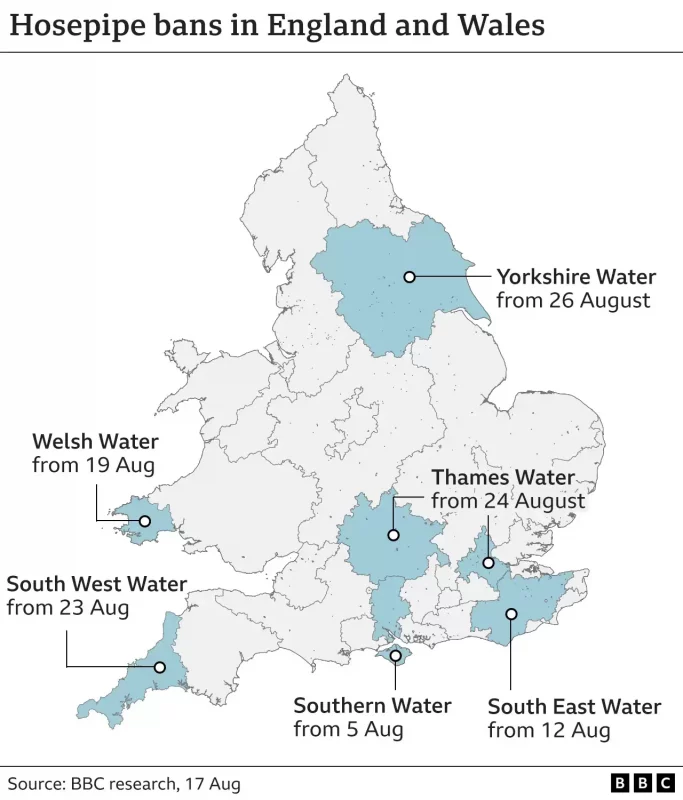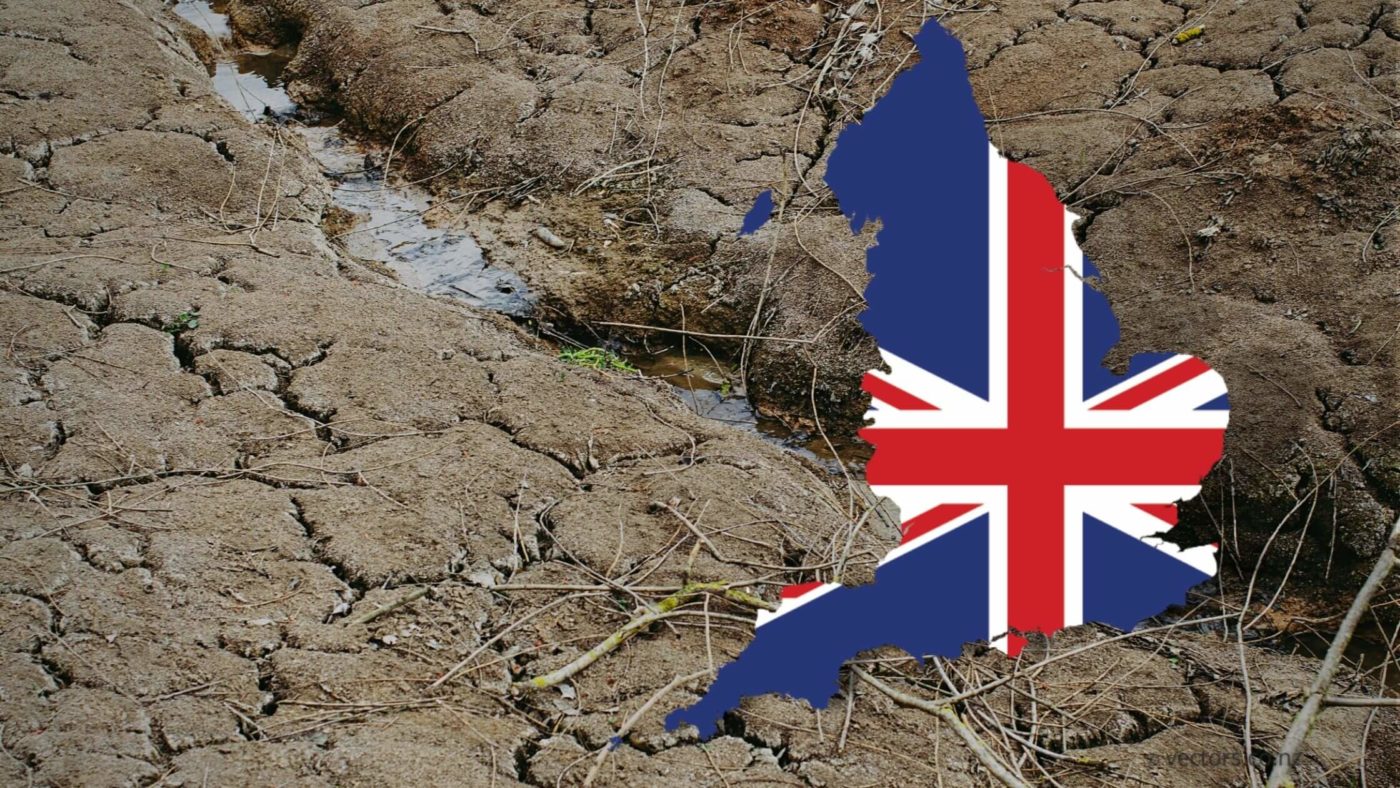The spells of hot, dry weather in the UK have caused issues and called for different restrictions on water use. Here is what the measures mean for households across the country, why they are necessary, and how to save water.
Water Shortages in the UK
Due to unusually dry conditions in spring and summer, the UK has been experiencing a so-called prolonged dry weather period. The country saw the hottest July since 1935 and there has been insufficient rainfall this year. The conditions are exacerbated by factors like climate change, ocean temperatures, and changes in the local landscape.
As a result, reservoir levels have dropped significantly. On August 12th, 2022, the Environment Agency declared an official drought in southwest, southern and central England, and Wales. With more heat in the forecast, more areas of the UK are expected to experience drought. Water companies have introduced restrictions in an attempt to reduce the impact.
What is a hosepipe ban and where in the UK are they in place
A hosepipe ban restricts the use of hosepipes or anything that connects to them (such as sprinklers). It is designed to reduce the level of water consumption to winter levels. Although the specifics vary between water companies, people are generally banned from using hosepipes when:
- watering outdoor plants or lawns
- filling a paddling or swimming pool
- cleaning a car or boat
- filling a domestic swimming pool or pond
- cleaning walls, windows, patios, or decking
Anyone who breaks the rules can face a fine of up to £1,000. However, there are exceptions for certain individual cases, such as business use (e.g. for commercial crops or car wash businesses), pools or fountains necessary for medical treatments or religious practices, watering new lawns within 28 days of planting, or topping up fishponds to preserve the welfare of the fish.

There are hosepipe bans in place in the following areas:
- Hampshire and the Isle of Wight (as of 5 August)
- Kent and Sussex (12 August)
- Pembrokeshire and part of Carmarthenshire (19 August)
- Cornwall and parts of north Devon (23 August)
- South of England (24 August)
- Yorkshire (26 August)
How to save water in the garden
There are many different ways to conserve water in the garden:
- When necessary, use a watering can. It saves water and helps direct the flow to the plant roots.
- Install a water butt to collect rainwater. In addition to watering your plants, it can be used for washing the car or cleaning your patio.
- Use grey water from cooking pots or from washing up. Note that you shouldn’t use soapy water on edible crops.
- Avoid watering your lawn. Even if it goes brown, your grass will likely grow back when it rains. You can also skip watering garden shrubs and trees as they are quite draught-tolerant.
- If choosing new plants for your garden, focus on drought-resistant varieties such as lavender, Euphorbia, and wildflowers.
- In a vegetable garden or allotment, only focus on the crops that are in greatest need of water. At this time of the year, carrots, parsnips, and beetroot can last weeks or months without rain. You can harvest potatoes and sack them up for winter.
- When you do water plants, soak them well instead of giving them a light sprinkle, or otherwise, the moisture won’t reach the roots.
- Apply other useful watering tips such as choosing the best time of the day, mulching around your plants, or placing saucers under plant pots.
As for saving water at home, you can do so by taking shorter showers, fixing leaks, and fully loading appliances such as dishwashers and washing machines before switching them on.
By following some or all of these recommendations, UK residents can contribute to the joint efforts to save water and overcome the challenges stemming from the shortage.

